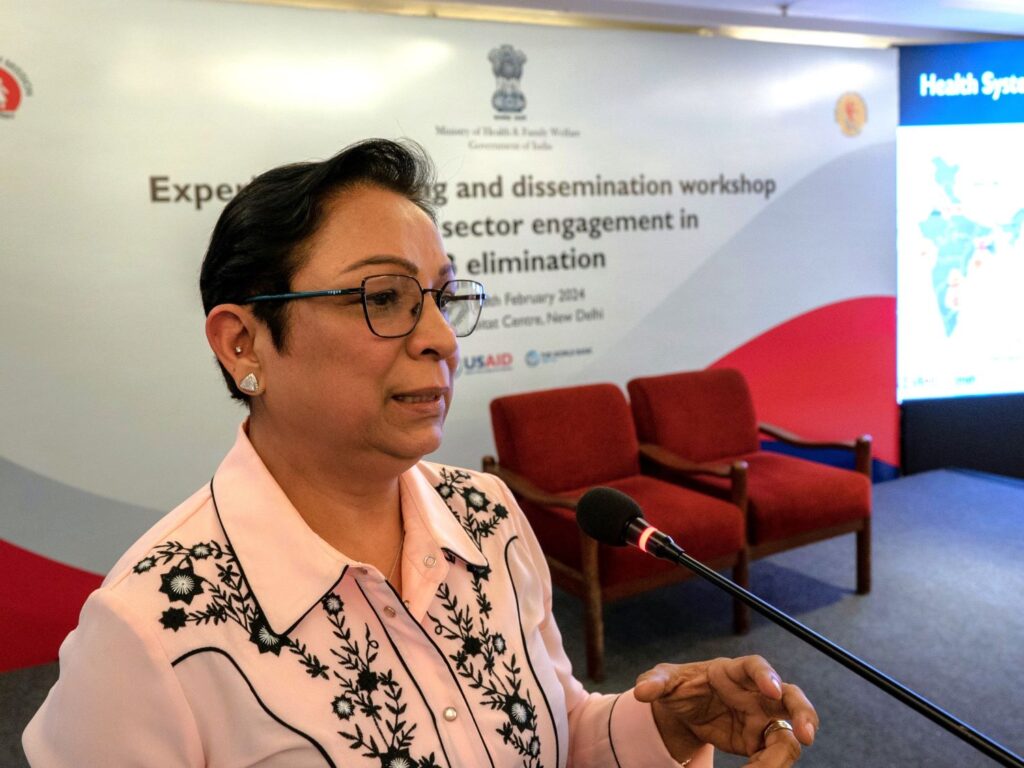Charting a Path to TB Elimination: Financing and Governance Strategies for High-Burden Countries
Charting a Path to TB Elimination: Financing and Governance Strategies for High-Burden Countries

Last September, the United Nations gathered to make strong commitments in the fight with humanity’s ancient foe: tuberculosis (TB). Against the backdrop of TB’s resurgence during the COVID-19 pandemic, UN member states agreed to big increases in funding and TB detection and treatment, including providing life-saving treatment for up to 45 million people between 2023 and 2027. What was discussed in less depth, however, were the details about how these new and expanded TB programs would be financed and operated. If we are to meet the global goal of ending TB by 2030, TB elimination programs worldwide will need not just technical excellence but also sound finances and improved approaches to use those financial resources efficiently.
Many of the world’s high-burden TB countries face the dilemma that as their economies grow, support from international donors such as the Global Fund for elimination programs for diseases like TB will decrease. These countries have committed to expand their TB programs, but increasingly they must fund them themselves. USAID’s Health Systems for Tuberculosis (HS4TB) project was created to help countries achieve their TB elimination goals with financing and governance strategies that meet these challenges.
In many high TB burden countries, the norm is for the government to implement domestically funded TB programs directly through everything from publicly run clinics to the salaries of public health officers, even as many of the donor-funded TB activities are implemented by nongovernmental organizations (NGOs). HS4TB works with national TB programs to introduce and improve government-led contracting, which allows governments to include both NGOs and the commercial private sector in the fight against TB. This increases the options for service delivery and allows governments to expand access to TB testing, treatment, and prevention.
HS4TB’s work to introduce or improve and expand contracting includes partnering with national TB programs in India and Bangladesh. In India, the government is committed to using contracting to expand and improve TB services, but delayed payment has been an issue, especially when heavy initial spending by the contractor is required.

HS4TB is working with India’s National TB Elimination Program and its related state entities to reduce the turnaround time of both the contracting process itself and of payments to contractors. The mean turnaround time for invoice payment in the five states where HS4TB works was reduced from 95 days in November 2022 to 69 days in December 2023. HS4TB’s support in India will expand to include three new states in early 2024.
Contracting in neighboring Bangladesh is in its early days compared to India and has required the sensitization of some parts of government. Strong political will is necessary for sustainable health contracting in any country. HS4TB assisted the Bangladesh National TB Program and the Health Economics Unit of the Ministry of Health and Family Welfare to outline the potential benefits of health services contracting to key stakeholders in Bangladesh through meetings and workshops. This work has resulted in a remarkable change in attitudes. At the start of these efforts, only 5 of the 24 priority stakeholders were aware of contracting for TB. But now, 19 of those 24 stakeholders have been engaged in efforts, are aware of contracting, and are either neutral on the subject or actively support it. This engagement resulted in the inclusion of contracting for TB services in critical policy documents and helped secure a budget for TB contracting in the National TB Program’s Operational Plan.
Kenya is one of the countries where, based on economic growth, domestic funding is expected to be responsible for a growing percentage of the TB response. To help equip the country for this change, HS4TB assisted the National Tuberculosis, Leprosy & Lung Disease (NTLD) Program to develop a TB Financing Roadmap and tools that act as a step-by-step guide for county TB coordinators in Kenya to advocate and obtain domestic financing for critical TB services.
In the end, all TB services, whether provided by public or private sector entities, should be free or low cost, high quality, and easily accessible—but that requires public sector financing. The financing and contracting options outlined above are innovations to help make ending TB a reality.
